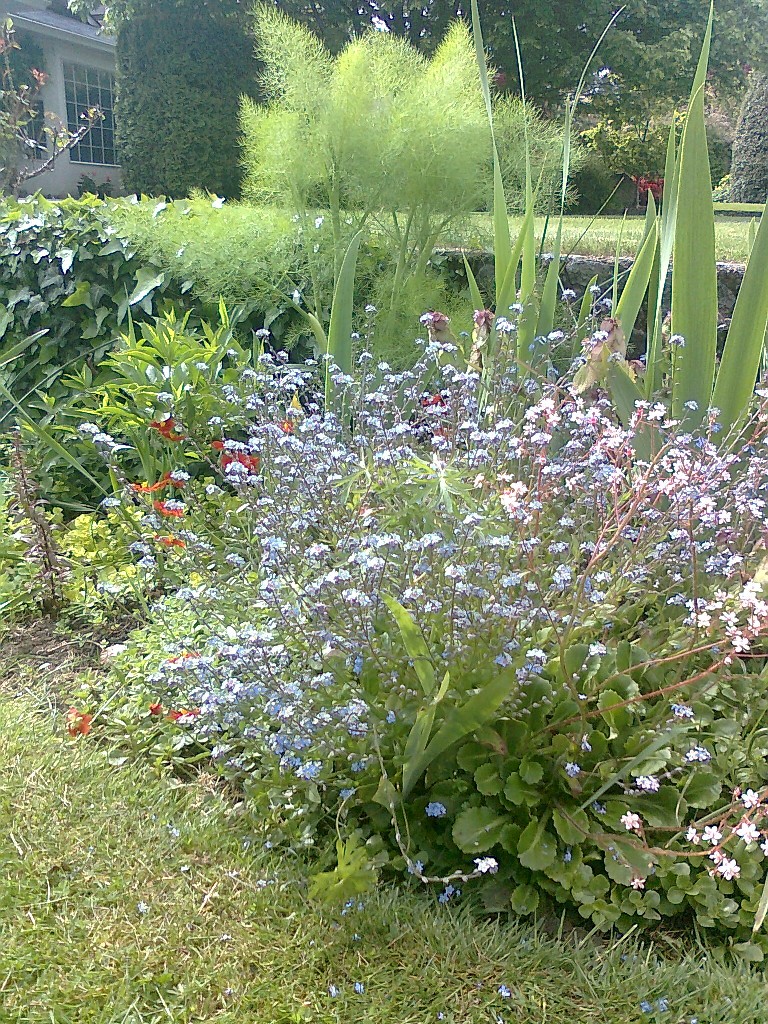
Irises
Everyone says that Iris flowers are easy to grow. There are about 270 species of irises out there, with many varieties of those.
The kind NOT to grow
The yellow water iris is an invasive species. One summer in Creston, BC, myself and others used a poleskis (a fire fighter's digging tool) to help axe massive clumps of them out of a swamp wearing chest-waders in 30 degree heat - so that sweat pooled on the INSIDE of the rubber overalls!
Thankfully, other types of irises are well behaved and do not take over wetlands. They simply do their thing and impress everyone with their magically deer proof, gorgeous and fragrant blossoms.
Sun requirements
This photo shows how beautiful bearded iris leaves are (the sword shaped leaves poking out near the back), but also shows how not to crowd them. Here, where it doesn't get super hot, bearded iris rhizomes want to bake in the sun. In super hot areas bury the rhizomes under about 1 inch of soil.
Avoiding rot
They're vulnerable to rotting in wet, acidic or nitrogen rich soil. So, phosphorous (P) and potassium (K) rich fertilizer work best and avoid high nitrogen fertilizer. More Bloom, bone meal, and liquid kelp work well. Wet soil can be made to drain better by heaping it into a raised bed and digging in sand or compost.
Dividing
They need to be divided every few years. The new plants easily break off from the old and can be replanted with lots of space and exposure to sunshine. The rhizomes can spend up to one month out of the soil before being replanted. When planting, trim the leaves into a V to prevent wind pushing the plants over exposing the roots.
Mulching
Where winter temperatures freeze the ground, the frost may heave the roots out. To prevent this, apply mulch over the rhizomes in fall and remove it in spring.
Slugs
Keep the plants tidy by removing dead leaves. Slugs and snails might be attracted to the rotting leaves and mistakenly munch on the living rhizome too!
This knowledge came from the wonderful book "Irises, A Gardener's Encyclopedia" by Claire Austin.